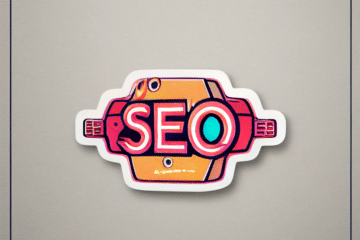Imagine this: You put your hard-earned money into a sponsored marketing campaign, and the outcomes are easy to track. You receive a clear view of the income made, the expenses paid, and the overall performance of the campaign. But what about search engine optimization? It’s a completely new universe, full of complexities and mysteries. In this #SEOchat, meet Jonas Sickler, Jeff Coyle, Angela Skane, and other specialists who will lead you on a journey to unearth the hidden pearls of SEO value.

As you read on, you’ll see why SEO isn’t simply about rankings, impressions, or traffic. It’s a window into your audience’s psyche, a world of unfiltered, real-time demands and interests.
But unlocking this treasure trove demands a careful curation of data from various sources, as Angela Skane explains, using tools like GSC, GA4, Mouseflow, and more.
SEO isn’t isolated from other marketing strategies, either. In this chat, you’ll explore how SEO and PPC can become a formidable duo, driving higher engagement and conversions. Jonas Sickler offers invaluable insights into leveraging Google Dynamic Search Ads (DSA) to enhance your paid search campaigns while dominating both organic and paid placements.
But it isn’t all. Sweepsify reveals various hidden SEO tactics such as content atomization, retargeting, and the power of syndication. You may increase your reach and engagement by producing SEO-optimized “sound bites” and reusing your content across several channels.
And, for those willing to take risks, Jonas Sickler offers the notion of OAO (Owned Asset Optimization), a strategy that may drive you to build new websites to broaden your audience and explore new territory.
So, if you’ve ever wondered about the genuine worth of SEO, come along for the ride. Prepare to solve the mystery, broaden your comprehension, and discover the limitless possibilities of SEO in an ever-changing digital world. Let’s go right into this #SEOchat!
A1.1) Paid campaigns are easy to measure: You spent x dollars to create and run the campaign this month, it generated x revenue from clicks, and the campaign ended. #SEOchat
Jonas Sickler
A1) Pages must be measured as individual successes and collective successes with their clusters and semantic neighbors. Teams aren’t ready to assess success at the topic and page pool level.
Jeff Coyle
#seochat A1. Because in comparison, PPC is dead simple. Revenue gained – explicit ad cost – (infrastructure/personelle/software cost) = ROAS With SEO You could have: Decreased support tickets by X% Increased conversion rate of leads by x% Increased traffic x% Not always 1:1
Jeremy Rivera
A2.1) Think beyond traditional metrics like rankings, impressions, traffic, and revenue when considering the business value of SEO. Organic search is like the world’s most honest focus group. People are giving you an unfiltered real-time peek inside their desires.
Jonas Sickler
A2: SEO helps build authority and solidify brand reputation in the SERPs.
Sweepsify
Love your answers to this
Angela Skane
@JonasSickler
SEO data is so valuable in determining how people view products and services and the pain points they’re experiencing. I love exploring PAA opportunities to uncover content opportunities #SEOchat
A3.1) There is no “One Ring” software that gives you every insight you could ever want. You’ll need to cobble together data from multiple sources to understand your website visitors. There are infinite combinations based on your budget and your needs.
A3.2) Since Terakeet primarily serves US-based Fortune 500 brands, I need to be very granular when analyzing website performance to make sure we’re attracting and engaging the right audience.A3.3) I use these tools:
Jonas Sickler
GSC – SERP performance
GA4 – traffic sources and engagement
Mouseflow – user focus and page behavior
Dealfront – target audience filtering
Optinmonster – CTA management
Marketo – email management
Triblio – content personalization
A4.1) SEO and PPC teams love to fight over budget. But great things happen when they work together. Don’t just run ads to paid landing pages. Also send paid traffic to your top performing blog content.
Jonas Sickler
A4.2) Google Dynamic Search Ads (DSA) can automatically serve ads based on page content. Since you created the content to satisfy search intent, those ads often have lower CPC, higher engagement, and better conversions than traditional paid search ads.
A4: Rank your sites for the same keywords that you bid on and you can dominate both the paid and organic placements.
Sweepsify
A5.1) Content that’s optimized for the consumer journey should land on the channels you own and control (website, blog, downloadable, etc.). But, those owned assets can also be leveraged to create new content optimized for social media.
Jonas Sickler
A5.2) Don’t just share or promote your articles on social platforms. Atomize them. Reimagine them. Create graphics, videos, summaries, and threads. Ask questions and invite discussion
A5.3) Map your topic clusters and retarget folks who visit one post with ads showing the rest of the content in the sequence. Have a downloadable playbook or asset related to a topic? Promote that to anyone who viewed related content on your site.
A5: 1. Syndicate your long form content 2. Create SEO optimized “sound bites” 3. Repurpose your exisiting content in the formats popular on each platform & make sure to include SEO optimized descriptions for videos / shorts
Sweepsify
A6.1) OAO is all about prioritizing the assets you control. So it often makes sense to launch new websites to reach a broader audience. For instance, you may want to target a topic related to your business that’s not relevant enough to put on your primary website. #SEOchat
A6.2) Example: Imagine your company sells car insurance. Anyone who owns or leases a vehicle is a potential customer, so you could launch blogs for buying and fixing vehicles. These are adjacent to insurance, but may not be a good fit for your main website.
Jonas Sickler
- Measuring Success: When it comes to measuring the success of SEO campaigns, it’s important to consider both individual and collective successes. While paid campaigns might be easier to measure with straightforward metrics like revenue and cost, SEO’s impact can be observed through a range of factors, such as decreased support tickets, increased conversion rates, and improved traffic.
- Looking Beyond Traditional Metrics: Organic search can offer valuable insights into customers’ desires and preferences. Going beyond traditional metrics like rankings and impressions, businesses can leverage SEO data to build authority, solidify brand reputation, and identify content opportunities that resonate with their target audience.
- Data Insights and Tools: The value of SEO lies in the data it provides, but no single tool can offer all the insights needed. Cobbling together data from multiple sources, like GSC, GA4, Mouseflow, and others, allows a comprehensive understanding of website performance and audience engagement.
- Collaboration between SEO and PPC: Instead of competing for budget, SEO and PPC teams should collaborate to achieve greater success. By directing paid traffic to top-performing blog content and using dynamic search ads, businesses can enhance their overall online presence.
- Optimizing Content for Different Channels: Content optimized for the consumer journey should be shared on owned channels like websites and blogs. Additionally, businesses can repurpose this content into graphics, videos, summaries, and threads to engage their audience on social media platforms.
- Leveraging OAO (Owned Asset Optimization): Prioritizing assets that businesses control can lead to successful SEO strategies. For example, launching new websites to reach a broader audience can be beneficial, especially when targeting topics related to the core business but not suitable for the primary website.
Understanding and showcasing the true value of SEO requires a holistic approach. Businesses should focus on comprehensive measurement, leveraging data from various sources, and optimizing content for different platforms. By integrating SEO and PPC efforts and prioritizing owned assets, businesses can unlock the full potential of their SEO strategies and elevate their online presence to new heights.
Remember, SEO is an ever-evolving landscape, and staying up-to-date with the latest trends and best practices is essential to maintaining a competitive edge in the digital world.


